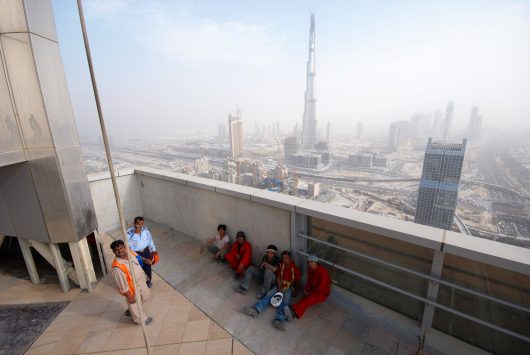|
|
|
|
|
|||||||||||
|
|||||||||||
|
Are funding
opportunities available in your community similar to those in Washington, D.C.
listed below?
From Washington, D.C., Boston, Chicago, Atlanta, Baltimore,
San Francisco, Oakland, Los Angeles. Nationally within the U.S. and
globally with the World Bank and others.
The funding environment has changed since March 2020 with
the start of the COVID-19 crisis.
Your mission & vison for your nonprofit in the
U.S. Must have certain perimeters in place for award and success.
You cannot be a separate island in seeking your funding as in the past.
Your mission & vision and program must be enhanced with some sustainability
and resiliency to meet the future demands for your community that you
serve. Addressing disasters, emergencies, and impact of climate change
must be a part of your ‘enhanced’ mission & vision.
Is your organization a member of BEMA International. This
differs from your individual membership.
Do not consider, ADD BEMA International as your
subject matter expert membership association to your grant proposal for your
organization. You’ll be surprised at the response. Your individual
membership takes on a whole new meaning when your organization becomes a member.
Without BEMA International. You may be just business
as usual.
|
bEMA International “We are now
faced with the fact that tomorrow is today. We are confronted with the
fierce urgency of now. In this unfolding conundrum of life and history
there is such a thing as being too late. Procrastination is still the
thief of time. Life often leaves us standing bare, naked and dejected
with a lost opportunity. This may well be mankind’s last chance to
choose between chaos or community.” Dr. Martin
Luther King, Jr., ‘Where Are We Going From Here: Chaos or Community’. Cooperation,
Collaboration, Communication, Coordination, Community engagement, and
Partnering (C5&P)
A 501 (c) 3 organization |
|
|
|
|
|
Funding
Opportunities and resources: COVID-19 Grant Funds Supporting Impactful Charities
During The COVID-19 Pandemic
The Adolph & Esther Gottlieb
Emergency Grant
FY 2021 Great Streets Retail Small
Business Grant
Funding Opportunities
Lumina Foundation Grant Program
Grassroots Exchange Fund Updated for
COVID19
American Bar Endowment’s Opportunity
Grant Program
NOFA Release - Improving Colorectal
Cancer Screening Rates in the District
Michael J. Fox Foundation Target
Application Program
Rural Healthcare Grant Program
Center for Craft: Craft Futures Fund
District of Columbia Opioid Response
(DCOR2) Grant Opportunities
Robert & Toni Bader Charitable
Foundation
RFA Update - Telemedicine
Innovations in Medication Assisted Therapy (“TeleMAT)”
_______________________________ |
https://www.usnews.com/news/cities/articles/2019-09-04/the-worlds-largest-slums
8 Cities With the World's Largest Slums
|
1. Manshiyat Nasser, Cairo 2. Cite-Soleil, Port
au Prince, Haiti
3. Khayelitsha, Cape Town, South Africa 4. Tondo, Manila,
Philippines 5. Dharavi, Mumbai Population: 1 million Romanticized in the Oscar-winning film "Slumdog Millionaire," Dharavi is a sprawling warren of narrow lanes, interconnected shacks and single-room living spaces that double as factories. Residents work as potters, leather tanners, weavers and soap makers amid the slum's open drains; some estimates peg the teeming community's annual sales as high as $1 billion.
6. Ciudad
Nezahualcoyotl (Neza), Mexico City 7. Kibera, Kawangware
and Mathare, Nairobi, Kenya 8. Orangi Town,
Karachi, Pakistan |
https://borgenproject.org/10-facts-about-poverty-in-the-united-arab-emirates/
"This media focus gives outsiders the illusion of a rich and prospering country, and here are 10 facts about poverty in the United Arab Emirates worth knowing. "

The United Arab Emirates (UAE) GDP per capita is a whopping 49,000, and the unemployment rate is as low as 2.4 percent. At first glance, the country appears to be thriving with room for growth; yet, there is a large population living in poverty in the UAE. This is not present in the news as the focus is usually on the prosperous cities of Abu Dhabi and Dubai, both of which control the majority of the UAE’s total wealth.
This media focus gives outsiders the illusion of a rich and prospering country, and here are 10 facts about poverty in the United Arab Emirates worth knowing.
These facts about poverty in the United Arab Emirates show that although stable in many regards, the UAE could do with foreign aid and government assistance.
While the country has impressive employment rates and GDP per capita, the percentage of citizens living in or at poverty level is striking. Thankfully, the local government of the UAE has implemented assistance programs in an effort to reduce and relief local poverty. But also in the meantime, assistance should be offered and readily available for those in need.
– Haley Hine
Photo: Google